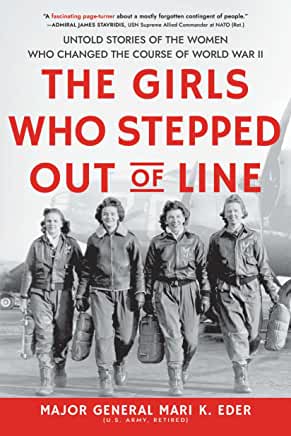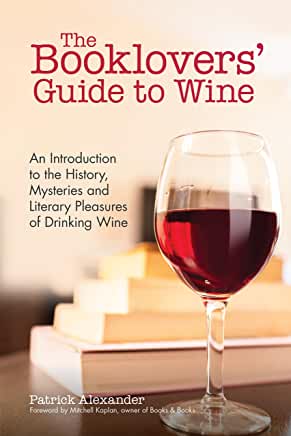CLICK HERE FOR PDF VERSION OF THESE COURSE DESCRIPTIONS (Best for Downloading or Printing)

COURSES
(SDGs) OFFERED FOR SUMMER 2023
Classes
start May 1st and
end August 28th.
Each S/DG
may choose to adjust its schedule to account for holidays.
Scroll down page this page to view all 26 Course (SDG) descriptions, or click any ID/Name below:
CLICK ON ANY BOOK
COVER OR TITLE TO
VIEW AMAZON'S OFFERINGS
|
|
|
|
|
|
|
1.
(AFR) AFRICA IS NOT A COUNTRY:
NOTES ON A
BRIGHT CONTINENT |
|
|
An exuberant, opinionated, stereotype-busting portrait of contemporary Africa in all its splendid diversity, by one of its leading new writers. So often, Africa has been depicted simplistically as a uniform land of famines and safaris, poverty and strife, stripped of all nuance. In this bold and insightful book, Dipo Faloyin offers a much-needed corrective, weaving a vibrant tapestry of stories that bring to life Africa’s rich diversity, communities, and histories. Starting with an immersive description of the lively and complex urban life of Lagos, Faloyin unearths surprising truths about many African countries’ colonial heritage and tells the story of the continent’s struggles with democracy through seven dictatorships. With biting wit, he takes on the phenomenon of the white savior complex and brings to light the damage caused by charity campaigns of the past decades, revisiting such cultural touchstones as the KONY 2012 film. Entering into the rivalries that energize the continent, Faloyin engages in the heated debate over which West African country makes the best bowl of rice and describes the strange, incongruent beauty of the African Cup of Nations. With an eye toward the future promise of the continent, he explores the youth-led cultural and political movements that are defining and reimagining Africa on their own terms. The stories Faloyin shares are by turns joyful and enraging; proud and optimistic for the future even while they unequivocally confront the obstacles systematically set in place by former colonial powers. Brimming with humor and wit, filled with political insights, and, above all, infused with a deep love for the region, Africa Is Not a Country celebrates the energy and particularity of the continent’s different cultures and communities, treating Africa with the respect it deserves. The history and countries in Africa allow many opportunities for presentations that enhance the book. |
|
|
|
|
|
|
|
|
|
|
|
|
2. (AIC) ARTIFICIAL INTELLIGENCE AND CHATGPT |
|
No
Common Reading: |
|
A rapidly developing component of artificial intelligence, AI, is the expanding capabilities of chatbots, software programs that communicate with the user in a manner expected from a human. In late 2022 a chatbot, ChatGPT, with greatly enhanced capabilities was released to the public as a free application. Its capabilities include the ability to answer follow-up questions, admit its mistakes, challenge incorrect premises, and reject inappropriate requests. It can be used in many applications including writing college-level essays, programming working computer code, guessing medical diagnoses, and explaining scientific concepts at multiple levels of difficulty. This S/DG will explore a few of the 48 uses identified by the program’s authors. Other areas of AI could also be included by the class if they so choose. No text is yet available for ChatGPT but media coverage has been extensive and could be used as a resource. |
|
|
|
|
|
|
|
|
|
|
|
3. (ASM) THE AGE OF THE STRONGMAN |
|
|
|
Recently, authoritarian leaders have become a central feature of global politics. Since 2000, self-styled strongmen have risen to power in capitals as diverse as Moscow, Beijing, Delhi, Brasilia, Budapest, Ankara, and Riyadh. These leaders are nationalists and social conservatives, with little tolerance for minorities, dissent, or the interests of foreigners. At home, they claim to be standing up for ordinary people against globalist elites; abroad, they posture as the embodiments of their nations. And everywhere they go, they encourage a cult of personality. What’s more, these leaders are not just operating in authoritarian political systems but have begun to emerge in the heartlands of liberal democracy, including, some would say, here in America. Our common reading has
been named a Best Book of 2022 by The Economist
and Foreign Affairs. The author,
Gideon Rachman, has been
in the same room with most of these strongmen and
reported from their countries over a long journalistic
career. While others have tried to understand their
rise individually, Rachman
pays full attention to the widespread phenomenon and
uncovers the complex and often surprising interaction
among these leaders. In the process, he identifies the
common themes in these developments, finding global
coherence in the chaos and offering a bold new
paradigm for navigating our world. Presentations can be
on any of the strongmen described in the common
reading – or any of the many others in the world, past
as well as present.
Alternatively, presentations might explore what
features make a country susceptible to the lure of
authoritarianism and what features make a country
immune. |
|
|
|
|
|
|
|
|
|
|
|
4. (BMW) BEST AMERICAN MAGAZINE WRITING 2022 |
|
Common Reading: The Best American Magazine Writing 2022, edited by Sid Holt (November 2022) |
|
Our common
reading is an anthology that presents a range of
outstanding writing on timely topics, from in-depth
reporting to incisive criticism. Kristin
Canning calls for a change in how we talk about
abortion (Women’s Health),
and Ed Yong warns us about the next pandemic (The
Atlantic). Matthieu Aikins
provides a gripping eyewitness account of the Taliban’s
seizure of Kabul (New York Times Magazine).
Heidi Blake and Katie J. M. Baker’s “Beyond
Britney” examines how people placed under legal
guardianship are deprived of their autonomy (BuzzFeed
News). Rachel Aviv profiles a psychologist who
studies the fallibility of memory—and has testified
for defendants including Harvey Weinstein and Bill
Cosby (The New Yorker). The anthology
includes dispatches from the frontiers of science,
exploring why Venus turned out so hellishly unlike
Earth (Popular Science) and detailing the
potential of NASA’s James Webb Space Telescope (Quanta).
It features celebrated writers, including Harper’s
magazine pieces by Ann Patchett, whose “These
Precious Days” is a powerful story of friendship
during the pandemic, and Vivian Gornick,
who offers “notes
on humiliation.” Carina del Valle Schorske depicts the
power of public dance after pandemic isolation (New
York Times Magazine). And the NBA icon Kareem
Abdul-Jabbar lauds the Black athletes who fought for
social justice (AARP the Magazine). Amid the
continuing reckoning with racism, authors reconsider
tarnished figures. The Black ornithologist and birder
J. Drew Lanham assesses the legacy of John James
Audubon in the magazine that bears his name, and
Jeremy Atherton Lin questions his youthful enthusiasm
for Morrissey (Yale Review). Jennifer Senior
writes about memory and the lingering grief felt for a
friend killed on 9/11 (The Atlantic). The
collection concludes with Nishanth Injam’s story of queer first love across
religious boundaries, “Come
with Me” (Georgia Review). The format for the class is expected to be similar to that of Best American Science and Nature Writing, which has been offered successfully several times in the past (and will be offered again in the coming trimester). Each person chooses an article, makes a brief presentation that might include additional information, and then conducts a discussion based on questions distributed earlier. The class is mostly discussion. |
|
|
|
|
|
|
|
|
|
|
|
5. (BSN) BEST AMERICAN SCIENCE AND NATURE WRITING 2022 |
|
Common Reading: The Best American Science and Nature Writing 2022 (November 2022; 336 pages) |
|
This S/DG has always been successful; Most S/DG members comment that they learn a lot because we read on such a diverse set of subjects, many with which one might never have come into contact. The class has been offered repeatedly over time. The current edition was published in November 2022. This year the articles were selected by guest editor renowned marine biologist Dr. Ayana Elizabeth Johnson and series editor Jaime Green. The articles are taken from magazines like The Atlantic, The New Yorker, Scientific American, and other similar (very readable) publications. There are approximately 30 articles to choose from. Presentations, which are mostly discussions, are drawn from a class member’s chosen article. |
|
|
|
|
|
|
|
|
|
|
|
6. (CAD) SHAKESPEARE'S CADS – FALSTAFF, IAGO, IACHIMO, CLOTEN, AND OTHERS |
|
No Common Reading: |
|
A different kind of Shakespeare study: A "cad" is defined as an ill-bred, dishonorable, or irresponsible man (often in treatment toward women) — not necessarily evil or mean-spirited, not necessarily comedic, not necessarily a fool, but possibly possessing one or more of those or other traits causing undeserved misfortune or damage to another character(s). Shakespeare's plays present cads of all shades. While "Henry V" is the Bard's most historically accurate play, in the predecessor pair of "Henry IV" (Parts 1 & 2) plays, the young Prince Hal (who becomes Henry V) is depicted as an cohort of aging knight Sir John Falstaff — a fictionalized and rather scandalous character created by Shakespeare at least partially for the purpose of contrasting the fictionalized character of Prince Hal with the popular, successful (but short-lived) King he becomes. Falstaff is such a popular character that Shakespeare also features him in the comedy "The Merry Wives of Windsor." Falstaff has been further memorialized over the centuries in other mediums, e.g., in numerous operas and in Orson Welles' 1966 movie "Chimes at Midnight" which adapts from all 3 plays. Welles plays Falstaff and considers the character to be "Shakespeare's greatest creation." But, does he really more affect another character(s)'s misfortunes than, for example, Iago who causes Othello's downfall, or Iachimo who wrongfully causes Imogen's husband Posthumus jealousy with near-fatal outcomes in "Cymbeline" (or is the cloddish Cloten the greater cad in that play?), or King "Henry VIII" himself with his infamous (mis)treatment of wives. Does Malvolio in "Twelfth Night" qualify as a cad? Each exhibits different caddish traits and drives the play's plot in different ways. This S/DG proposes to study and discuss what makes well scripted cads contribute so much to a play (and speculate on each play's success without the caddish character?). Most importantly, the class will identify other worthy cads across Shakespeare's plays. And consider, are there any female equivalents of cads? Working individually or in small teams, class members will present/study/discuss some of these characters via options including performances of selected scenes, insightful readings, videos, and summary presentations. Optionally, are there 20th/21st-century versions of any of these Shakespeare characters, either in real life or in literature/film/TV etc.? Finally, is
Prince Hal a cad?
|
|
|
|
|
|
|
|
|
|
|
|
7. (CEL) THE SONG OF THE CELL |
|
|
The discovery of cells—and the reframing of the human body as a cellular ecosystem—announced the birth of a new kind of medicine based on the therapeutic manipulations of cells. In his book the author tells the story of how scientists discovered cells, began to understand them, and are now using that knowledge to create new humans. Told in six
parts, the book is both panoramic and intimate—a
masterpiece. We
can learn to look at the body as the result of a
self-organizing collective of cells, each of them
an agent pursuing its own goals. Possible presentation topics:
Darwinian evolution of cells, can cells show how to
create A.I., use of Nanotechnology for cellular
therapy. |
|
|
|
|
|
|
|
|
|
|
|
|
8. (CON) NEW SCIENCE OF CONSCIOUSNESS |
|
Common Reading: Being You: A New Science of Consciousness, by Anil Seth (October 19, 2021) |
|
Anil Seth's quest to understand the
biological basis of conscious experience is one of the
most exciting contributions to twenty-first-century
science. What does it mean to “be you”—that is, to
have a specific, conscious experience of the world
around you and yourself within it? There may be no
more elusive or fascinating question. Historically,
humanity has considered the nature of consciousness to
be a primarily spiritual or philosophical inquiry, but
scientific research is now mapping out compelling
biological theories and explanations for consciousness
and selfhood. Now, internationally renowned
neuroscience professor, researcher, and author Anil
Seth is offering a window into our consciousness in Being
You: A New Science of Consciousness. Anil Seth
is both a leading expert on the neuroscience of
consciousness and one of most prominent spokespeople
for this relatively new field of science. His radical
argument is that we do not perceive the world as it
objectively is, but rather that we are prediction
machines, constantly inventing our world and
correcting our mistakes by the microsecond, and that
we can now observe the biological mechanisms in the
brain that accomplish this process of consciousness. We can learn to look at the
consciousness as a phenomenon that can be taken out of
the realm of religion and philosophy and instead
studied as a scientific concept. With the
advent of Artificial Intelligence this consciousness
becomes a practical aspect of our future relationship
with AI. Possible presentations could include: · Consciousness of animals · “Hard” and “Easy” problems of Consciousness ·
Conscious Artificial Intelligence and
Robots |
|
|
|
|
|
|
|
|
|
|
|
9. (CUL) THE CULTURE TRANSPLANT |
|
|
|
In The Culture Transplant Garett Jones argues that cultural traits can persist for generations after migrants arrive in a new country. Much of the literature on immigrant assimilation looks at easily observable questions about subsequent generations, such as whether they are learning English, graduating high school, and moving up the income ladder. Jones's book proves that these external accomplishments do not necessarily indicate assimilation at the deeper level of cultural values. Built upon mainstream, well-reviewed academic research that hasn't pierced the public consciousness, this book offers a compelling refutation of an unspoken consensus that a nation's economic and political institutions won't be changed by immigration. Jones refutes the common view that we can discuss migration policy without considering whether migration can, over a few generations, substantially transform the economic and political institutions of a nation. And since most of the world's technological innovations come from just a handful of nations, Jones concludes, the entire world has a stake in whether migration policy will help or hurt the quality of government and thus the quality of scientific breakthroughs in those rare innovation powerhouses. This is of the greatest possible importance, because every day social science discovers further evidence that these cultural values, more than anything else, determine what a country's politics and its economy will look like in the future. Possible research/presentation topics might include: · Are America’s immigrants assimilating? · Is the USA more prosperous as a result of the last 40 years of immigration surge? |
|
|
|
|
|
|
|
|
|
|
|
10. (CVW) THE NEXT CIVIL WAR? |
|
Common
Reading: How
Civil Wars Start: And How to Stop Them by
Barbara F. Walter (January 2022) |
|
A 2022 poll found that 43% of Americans believe a civil war will occur here within the decade. Of course, few of the people responding to that survey are experts about civil wars. But unfortunately, Barbara F. Walter, a scholar who specializes in the causes of civil wars, is also worried. The text for this S/DG is Walter’s 2022 book How Civil Wars Start: And How to Stop Them, which has received high praise and an Amazon rating of 4.5 (out of 5). Walter is a professor of International Relations at UC San Diego and a life member of the Council on Foreign Relations. Her book uses quantifiable metrics to measure where countries lie on a continuum between democracy and autocracy. Using examples of civil wars around the world, she concludes that nations are most vulnerable when proceeding rapidly from autocracies to democracies or conversely from democracies to autocracies, a condition known as anocracy. ‘The other major indicator is factionalism. Walter considers the added impact of accelerants and ponders how close the U.S. is to the brink as well as what the conflict would look like here. In an attempt to be hopeful, Walter ends her book by recommending various fixes to strengthen our electoral process and faith in government. But she admits that those solutions will not be easy considering the daunting task of approving any amendments to our antiquated constitution. Presentations for this S/DG could include examples of how any of a number of countries have avoided civil war, deep dives on recommended remedies, and comparisons between modern civil wars and those of the past, including our own Civil War. |
|
|
|
|
|
|
|
|
|
|
|
11. (DAF) THE DISILLUSIONMENT OF AMERICA’S FOUNDERS |
|
|
|
Americans
seldom deify their Founding Fathers any longer, but
they do still tend to venerate the Constitution and
the republican government that the founders created.
Strikingly, the founders themselves were far less
confident in what they had wrought, particularly by
the end of their lives. In fact, most of
them--including George Washington, Alexander Hamilton,
John Adams, and Thomas Jefferson--came to deem
America's constitutional experiment an utter failure
that was unlikely to last beyond their own generation.
In our common reading, political scientist Dennis
Rasmussen tells the fascinating and too-little-known
story of the founders' disillusionment. [Rasmussen’s
earlier book, The
Infidel and the Professor, was the core reading
for a Spring 2020 S/DG.] As
Rasmussen shows, the founders' pessimism had a variety
of sources: Washington lost his faith in America's
political system above all because of the rise of
partisanship, Hamilton because he felt that the
federal government was too weak, Adams because he
believed that the people lacked civic virtue, and
Jefferson because of sectional divisions laid bare by
the spread of slavery. The one major founder who
retained his faith in America's constitutional order
to the end was James Madison, and the book also
explores why he remained relatively optimistic when so
many of his compatriots did not. As much as Americans
today may worry about their country's future,
Rasmussen reveals, the founders faced even graver
problems and harbored even deeper misgivings. Possible
presentation topics include Articles of Confederation,
Federalists, Constitutional Convention, other Founding
Fathers, republican government |
|
|
|
|
|
|
|
|
|
|
|
12. (GEO) PRISONERS OF GEOGRAPHY |
|
|
|
All leaders of nations are constrained by geography. Their choices are limited by mountains, rivers, seas, and concrete. To understand world events, news organizations and other authorities often focus on people, ideas, and political movements, but without considering geography, we never have the full picture. Maps tell us things not only about where we are going but about the world in general. Our common reading, a NYT best seller, provides 10 major maps (plus some others) covering Russia, China, USA, and seven regions (Western Europe, Africa, the Middle East, Latin America, South Asia, East Asia, and the Arctic) with well-written discussions of what goes on in each. Written in 2015, the book starts with a description of how Russia sees the world and particularly Ukraine. Timely. The author is a British foreign correspondent who has seen the world, including several war zones. Possible Research/Presentation Topics Might Include: What I saw on my travels through X; the importance of region Y to USA economy and wellbeing; something we should watch for in Z; a totally different interpretation of the situation in W; etc. |
|
|
|
|
|
|
|
|
|
|
|
13. (IMW) AN IMMENSE WORLD |
|
|
|
What we consider “extrasensory” is actually “sensory” to many nonhuman animals. Other animals greatly exceed our ability to hear, see, feel, smell, taste, and otherwise experience life. But because of our anthropocentrism, we rarely consider how much we are missing in our own environments. This S/DG explores nonhuman perception using a highly praised 2022 book as our guide, Ed Yong’s An Immense World: How Animal Senses Reveal the Hidden Realms around Us. This book, which the New York Times calls one of the ten best books of 2022, is full of surprising facts such as the power of birds to hear details that we miss and the ability of snakes to smell with their tongues. It also makes us reconsider that our environment is much bigger than we think. Presentation
topics could include examination of a particular
sense, the “super-human” sensory talents of dogs,
cats, fish, and other species, the implications of the
sensory limitations of human beings, and the potential
for expanding our understanding by thinking outside
the box of human myopia. |
|
|
|
|
|
|
|
|
|
|
|
14. (MDA) POWERS AND THRONES: A NEW HISTORY OF THE MIDDLE AGES |
|
Common Reading: Powers and Thrones: A New History of the Middle Ages by Dan Jones (November 9, 2021) |
|
To understand our world today it is important to understand our past. This course will show that there was no “Dark Ages”. The bestselling author gives us an epic history of the medieval world. The Sunday Times (UK) called it simply the best popular history of the Middle Ages there is. When the once-mighty city of Rome was sacked by barbarians in 410 and lay in ruins, it signaled the end of an era--and the beginning of a thousand years of profound transformation. In a gripping narrative bursting with big names—from St. Augustine and Attila the Hun to the Prophet Muhammad and Eleanor of Aquitaine—Dan Jones charges through the history of the Middle Ages. Powers and Thrones takes readers on a journey through an emerging Europe, the great capitals of late Antiquity, as well as the influential cities of the Islamic West, and culminates in the first European voyages to the Americas. The medieval world was forged by the big forces that still occupy us today: climate change, pandemic disease, mass migration, and technological revolutions. This was the time when the great European nationalities were formed; when the basic Western systems of law and governance were codified; when the Christian churches matured as both powerful institutions and the regulators of Western public morality; and when art, architecture, philosophical inquiry and scientific invention went through periods of massive, revolutionary change. The West was rebuilt on the ruins of an empire and emerged from a state of crisis and collapse to dominate the world. Every sphere of human life and activity was transformed in the thousand years covered by Powers and Thrones. As we face a critical turning point in our own millennium, Dan Jones shows that how we got here matters more than ever |
|
|
|
|
|
|
|
|
|
|
|
15. (MOV) MOVIES: THE BEST WESTERNS |
|
No Common Reading. |
|
The Western was the most popular film genre in Hollywood for decades. In the 1950s, Hollywood produced more Western movies than all other genres combined. Classic Westerns are primarily set in the American Old West between the late eighteenth century and late nineteenth century. Some examples of popular classic Westerns are Butch Cassidy and the Sundance Kid, Stagecoach, High Noon, True Grit, The Good, the Bad, and the Ugly, Unforgiven and 3:10 to Yuma. The Contemporary Western is a sub-genre that reflects the motifs and themes of classic Westerns but is set in contemporary America. These films often explore the “classic cowboy” struggling in the “civilized” world, and the way the West has changed. Brokeback Mountain and Hud are examples. Revisionist Westerns came about in the 1960’s as a response to classic Westerns, calling upon the audience to examine the morality of the use of violence and incorporating Native Americans in positive roles. Dances with Wolves and The Man Who Shot Liberty Valance are examples. Another sub-genre, the Science Fiction Western, often incorporates future technology to transport the characters back to the Wild West, like Back to the Future III and Wild, Wild West. Participants can choose a film in any Western genre for their presentation, which could focus on the film’s source material, its themes, its historical and cultural relevance, its techniques and biographical information about the filmmakers and actors. While there is no common reading, there are numerous Internet lists of the best Westerns. |
|
|
|
|
|
|
|
|
|
|
|
16. (MYC) BEST MYSTERY STORIES 2021 (In
classroom only) |
|
|
|
Note:
This trimester, we will be again offering two
distinct sections of our short stories offering,
each with a different 3 letter identifier. MYC will be a “Classroom Only” S/DG;
that is, all classes will be held at BCHD, in either
room L8 or L9.
MYZ will be a Zoom or Hybrid Zoom
S/DG, depending on the desires of class members. Both S/DGs will be subject to the
normal scheduling restrictions on Omnilore classes;
that is, they must have at least 10 people available
at the same time and will be split if more than 19
members sign up. You may request MYC and/or MYZ on your
request form. If
you are willing to attend in either format, list
your preferred format first and your secondary
preference as a backup. The 20 stories (plus one reprint by Ambrose Bierce from 1888) in this anthology were all published in 2020; each is preceded by a short introduction to the author and is followed by a brief note by the author concerning the genesis of the story. As with any such anthology, one reader’s favorites will be another’s most-hated; that said, my favorite stories in this collection include Michael Bracken’s “Blest Be the Tie That Binds,” about a Mob attempt to launder money through church tithings; “The Locked Cabin” by Martin Edwards, which takes place in the 1930s aboard the Queen Mary; Sue Grafton’s “If You Want Something Done Right…” which slyly illustrates that saying; the poignant “The Truth About Lucy,” by Dennis McFadden, showing how the past affects future generations; Joyce Carol Oates’ lovely imaging of how a member of the Manson Family might prepare for a “Parole Hearing, California Institution for Women, Chino, California”; Stephen King’s take on one of the famous steps of AA, “The Fifth Step”; and Andrew Welsh-Huggins’ “The Path I Took,” in which a student of languages travels to Gaelic Ireland in 1983, where his studies are disrupted by The Troubles. There is also a list of honorable mentions at the end of the book, for the reader who wants to find more stories in this genre. |
|
|
|
|
|
|
|
|
|
|
|
17. (MYZ) BEST MYSTERY STORIES 2021 (Zoom
or Hybrid) |
|
|
Note:
This trimester, we will be again offering two
distinct sections of our short stories offering,
each with a different 3 letter identifier. MYC will be a “Classroom Only” S/DG;
that is, all classes will be held at BCHD, in either
room L8 or L9.
MYZ will be a Zoom or Hybrid Zoom
S/DG, depending on the desires of class members. Both S/DGs will be subject to the
normal scheduling restrictions on Omnilore classes;
that is, they must have at least 10 people available
at the same time and will be split if more than 19
members sign up. You may request MYC and/or MYZ on your
request form. If
you are willing to attend in either format, list
your preferred format first and your secondary
preference as a backup. The 20 stories (plus one reprint by Ambrose Bierce from 1888) in this anthology were all published in 2020; each is preceded by a short introduction to the author and is followed by a brief note by the author concerning the genesis of the story. As with any such anthology, one reader’s favorites will be another’s most-hated; that said, my favorite stories in this collection include Michael Bracken’s “Blest Be the Tie That Binds,” about a Mob attempt to launder money through church tithings; “The Locked Cabin” by Martin Edwards, which takes place in the 1930s aboard the Queen Mary; Sue Grafton’s “If You Want Something Done Right…” which slyly illustrates that saying; the poignant “The Truth About Lucy,” by Dennis McFadden, showing how the past affects future generations; Joyce Carol Oates’ lovely imaging of how a member of the Manson Family might prepare for a “Parole Hearing, California Institution for Women, Chino, California”; Stephen King’s take on one of the famous steps of AA, “The Fifth Step”; and Andrew Welsh-Huggins’ “The Path I Took,” in which a student of languages travels to Gaelic Ireland in 1983, where his studies are disrupted by The Troubles. There is also a list of honorable mentions at the end of the book, for the reader who wants to find more stories in this genre. |
|
|
|
|
|
|
|
|
|
|
|
|
18. (NAM) INDIGENOUS CONTINENT: THE EPIC CONTEST FOR NORTH AMERICA |
|
|
There is an old, deeply rooted story about America that goes like this: Columbus “discovers” a strange continent and brings back tales of untold riches. The European empires rush over, eager to stake out as much of this astonishing “New World” as possible. Though Indigenous peoples fight back, they cannot stop the onslaught. White imperialists are destined to rule the continent, and history is an irreversible march toward Indigenous destruction. Yet as with other long-accepted origin stories, this one, too, turns out to be based in myth and distortion. In Indigenous Continent, acclaimed historian Pekka Hämäläinen presents a sweeping counternarrative that shatters the most basic assumptions about American history. Shifting our perspective away from Jamestown, Plymouth Rock, the Revolution, and other well-trodden episodes on the conventional timeline, he depicts a sovereign world of Native nations whose members, far from helpless victims of colonial violence, dominated the continent for centuries after the first European arrivals. From the Iroquois in the Northeast to the Comanches on the Plains, and from the Pueblos in the Southwest to the Cherokees in the Southeast, Native nations frequently decimated white newcomers in battle. Even as the white population exploded and colonists’ land greed grew more extravagant, Indigenous peoples flourished due to sophisticated diplomacy and leadership structures. By 1776, various colonial powers claimed nearly all of the continent, but Indigenous peoples still controlled it―as Hämäläinen points out, the maps in modern textbooks that paint much of North America in neat, color-coded blocks confuse outlandish imperial boasts for actual holdings. In fact, Native power peaked in the late nineteenth century, with the Lakota victory in 1876 at Little Big Horn, which was not an American blunder, but an all-too-expected outcome. Hämäläinen ultimately contends that the very notion of “colonial America” is misleading, and that we should speak instead of an “Indigenous America” that was only slowly and unevenly becoming colonial. The evidence of Indigenous defiance is apparent today in the hundreds of Native nations that still dot the United States and Canada. Necessary reading for anyone who cares about America’s past, present, and future, Indigenous Continent restores Native peoples to their rightful place at the very fulcrum of American history. Given the size of North America and the number of tribes, areas of the country, and ongoing problems of the first People it should be easy to find presentations related to the book and your personal experiences |
|
|
|
|
|
|
|
|
|
|
|
|
19. (NVT) NON VERBAL THINKING |
|
|
|
Many people think
primarily verbally, that is sequentially. Other people
tend to think visually, forming webs of graphic
associations. Visual thinkers may think in abstract
spatial patterns or in photorealistic images or
objects. These are not strict cognitive categories but
a continuum. Our author,
Temple Grandin, laments the loss of hands-on school
activities that develop and reward visual thinking.
Standardized tests and one-size-fits-all educations
weed out people who fall into the latter category,
shutting out the ideas of millions of bright thinkers
who could solve society’s most pressing problems.
(Many people we consider geniuses, like Michelangelo
and Thomas Edison, were visual thinkers—and Grandin
wonders if they would have accomplished so much
today.) Grandin also sprinkles in plenty of fun facts
(you’ll never look at Ikea furniture the same way
again), a quiz to determine what kind of thinker you
are, a case for abolishing algebra, and an
illuminating explanation of the brain, the
all-powerful organ we know so little about. Possible Research/Presentation Topics might include: my experiences with people who think differently than me; how teams can benefit from having different types of thinkers, etc. |
|
|
|
|
|
|
|
|
|
|
|
20. (SLF) PSYCHOLOGY OF THE SELF |
|
|
|
Some contend that
free will is an illusion based on arguments from
science that each event is, in Newtonian physics,
determined by forces resulting from prior events. The
author of our Common Reading argues that free will is
real. After all, at the sub-atomic level, things
appear quite random. Someone has said, “Of course we
believe in free will. We don’t have any other choice.”
Our author, Kennon M. Sheldon, works in
Self-Determination Theory, which he calls the most
comprehensive and best-supported theory of human
motivation. A core tenant is that “people need to
experience themselves as the causal source and origin
of their own behavior rather than feeling controlled
and determined by external forces.” When people feel
autonomous, they are more content and successful. If
we are not in control of what we do, how can we be
blamed for wrongdoing?
Consider a practical
problem with the doctrine of determinism—namely,
that believing in it tends to make people less
competent, less happy, and less moral. Experiments
show that convincing people to believe in
determinism negatively affects them in many ways. Possible Research/Presentation Topics Might Include: one of the ways I motivate myself is X; the major constraints of my life are Y; ways in which I try to encourage my grandchildren are Z: my observations of recent immigrants suggests, W; etc |
|
|
|
|
|
|
|
|
|
|
|
21. (SOF) THE SCIENCE OF FRIENDSHIP |
|
|
Friendship is not just pleasant; it’s also an essential biological process. In this enlightening popular science book, Scientific American journalist Lydia Denworth explores the biological, psychological, and evolutionary foundations of friendship. The science of friendship has grown remarkably in recent years, with scientists studying everything from the evolution of friendship (in all animals), to the chemicals that create bonds in our brains. The author’s prose is accessible, clear and often lyrical. This S/DG will provide an eclectic mixture of neuroscience, psychology, history, evolution, and animal behavior science. The book shows: 1) how our bodies and minds are designed for friendship across the lifespan, 2) the processes by which healthy social bonds are developed and maintained, and 3) how friendship is changing in the age of social media. Your presentations for this class might showcase significant historical friendships, how friendships change over a lifespan, famous interspecies friendships, what are some of the major causes of friendship breakups, what happens to our bodies when a significant friendship ends, the microbiology of friendship and love, how friendships can be categorized, etc. |
|
|
|
|
|
|
|
|
|
|
|
|
22. (TED) TED TALKS: IDEAS WORTH SPREADING |
|
No Common Reading |
|
TED talks are
amazing resources for anyone looking to further their
knowledge and self-education. On TED, you can find
talks on anything from strange animals of the ocean to
how to boost your creativity to up-and-coming
technologies. This class has
been offered a few times in the past, but not
recently. Presentations
are drawn from the talks, which are watched before
class, and are mostly discussion. Class members
could decide to organize around a certain group of
talks, like “Best Talks of 2022” or the “20 Most
Inspiring Talks Ever,” or just select randomly. TED talks are
amazing resources for anyone looking to further their
knowledge and self-education. On TED, you can find
talks on anything from strange animals of the ocean to
how to boost your creativity to up-and-coming
technologies. *Please note that all Omnilore participants will do a presentation, by selecting a talk and researching the subject and the speaker. The selected TED talk serves as a nucleus for the presentation. The Omnilore member provides the group with the talk chosen and questions or ideas for consideration leading to discussion. Group members watch the talk on their computers at home and come prepared for informed discussion. |
|
|
|
|
|
|
|
|
|
|
|
23. (TVS) TELEVISION: THE GREATEST SERIES |
|
|
There are many lists of the greatest TV shows but a few series are at or near the top of almost every list. But that might not match your idea of the greatest series you have seen. Let’s get together and compare notes. The class may have its own ideas on how this should be organized, but one way would be for each member to pick his choice for the best series, provide a background presentation on the series and the professionals behind it, and if possible, identify a way to see one episode which would be a further basis for discussion. Many of the top-rated shows are available on Netflix or HBO. |
|
|
|
|
|
|
|
|
|
|
|
|
24. (WCW) WOMEN WHO CHANGED THE COURSE OF WORLD WAR II |
|
|
|
The Girls Who Stepped Out of Line are the heroes of the greatest generation that you hardly ever hear about. These women did extraordinary things, but despite their amazing accomplishments, they have gone mostly unheralded and unrewarded. This new book by retired Major General Mari K. Elder takes you inside the lives and experiences of 15 unknown women heroes from the Greatest Generation who served, fought, struggled and made things happen during World War II, in and out of uniform. Their lives and legacies open the door to a wide range of presentations about other women who served in World War II, women throughout history whose stories should be told, women of courage today who are “stepping out of line” to do important things, women in the military today and how their experience differs from that of women in World War II, problems faced by women in the military today with respect to advancement, dealing with sexual harassment and sometimes assault, and more. |
|
|
|
|
|
|
|
|
|
|
|
25. (WNE) THE BOOKLOVERS’ GUIDE TO WINE – In Person Only |
|
|
|
This guide demystifies the choices of cabernet, pinot grigio and shiraz along with the perfect literate accompaniment to the libation. A literary twist on traditional food and wine pairings. The Booklovers’ Guide to Wine explores how great wines and great writers can be combined to enhance the enjoyment of both. Author Patrick Alexander dives deeply into the history of wine from the time of Noah to the era of two-buck Chuck. Enjoy this global wine tour as Alexander explores the significance of terroir and varietal, the differences between Old World and New World wines and why England, a small island with almost no vineyards, is such a dominant force in the world of wines. The book provides insight in how history, geography, economics and alcohol content have impacted the making of wines. Possible
presentation topics include literary legends and their
favorite wines; how soil and climate affect the taste
of wine; the connection between religion and wine;
basic categories of wine. |
|
|
|
|
This webpage
Last Updated: Feb. 3, 2023 (hh)
Website
Suggestions to: Webmaster@Omnilore.org
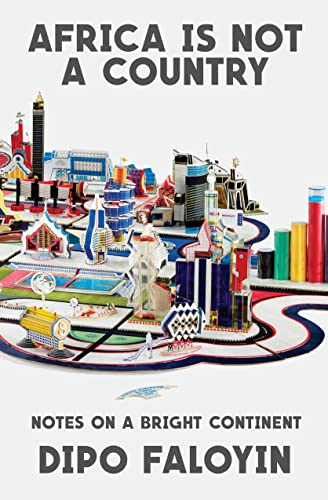

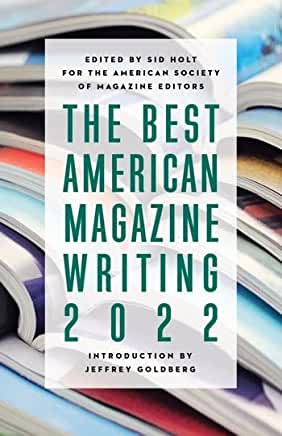
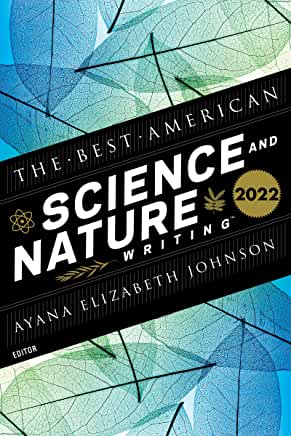
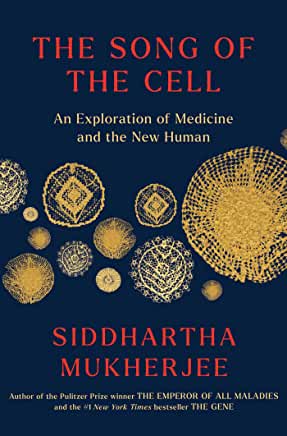
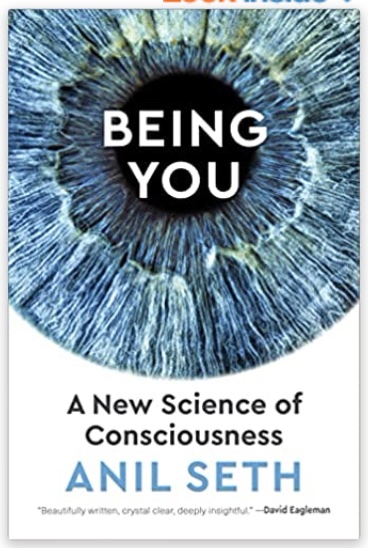
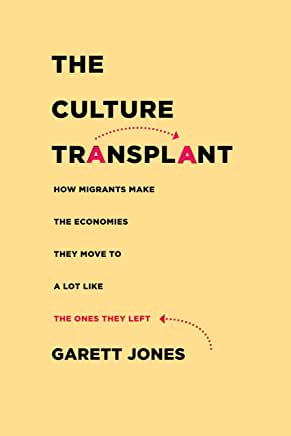
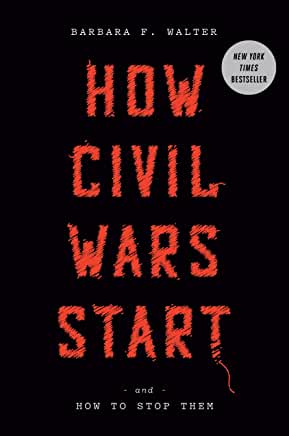
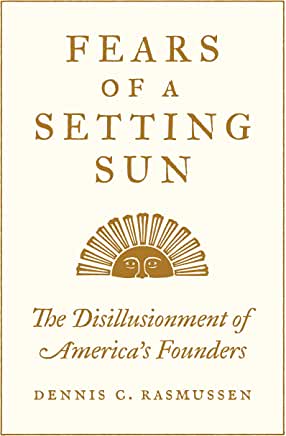
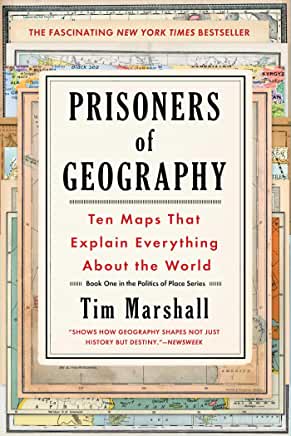
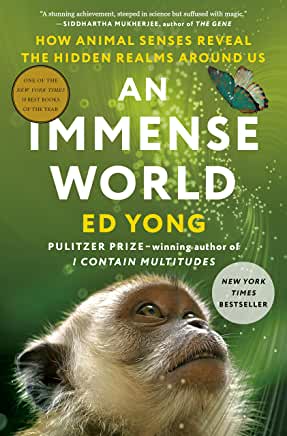
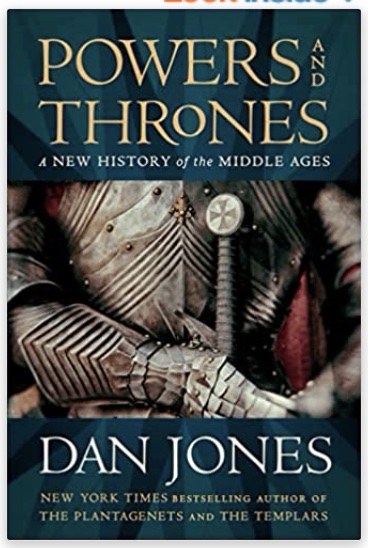
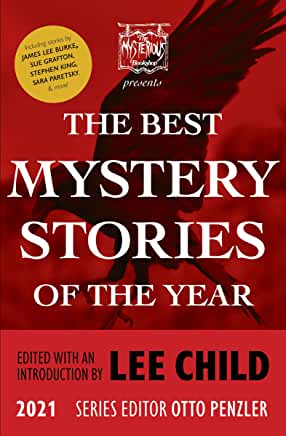
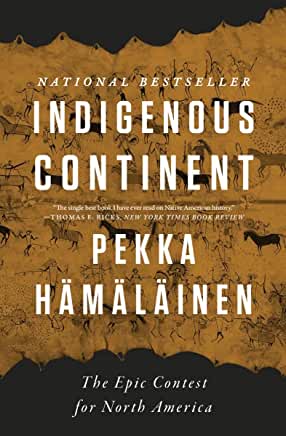
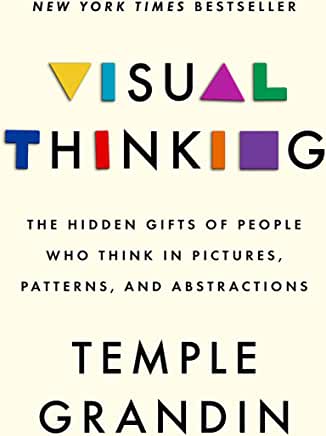
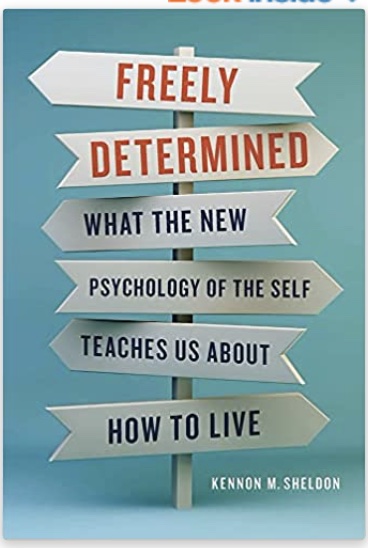
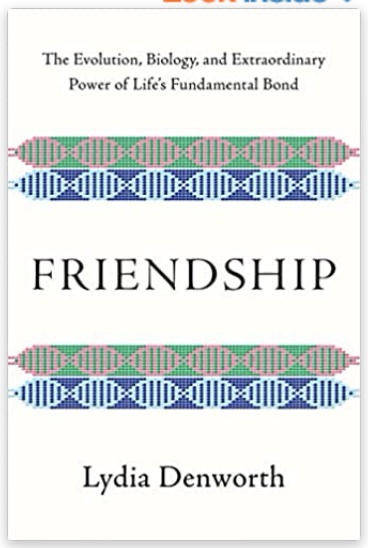
-cover.jpg)
